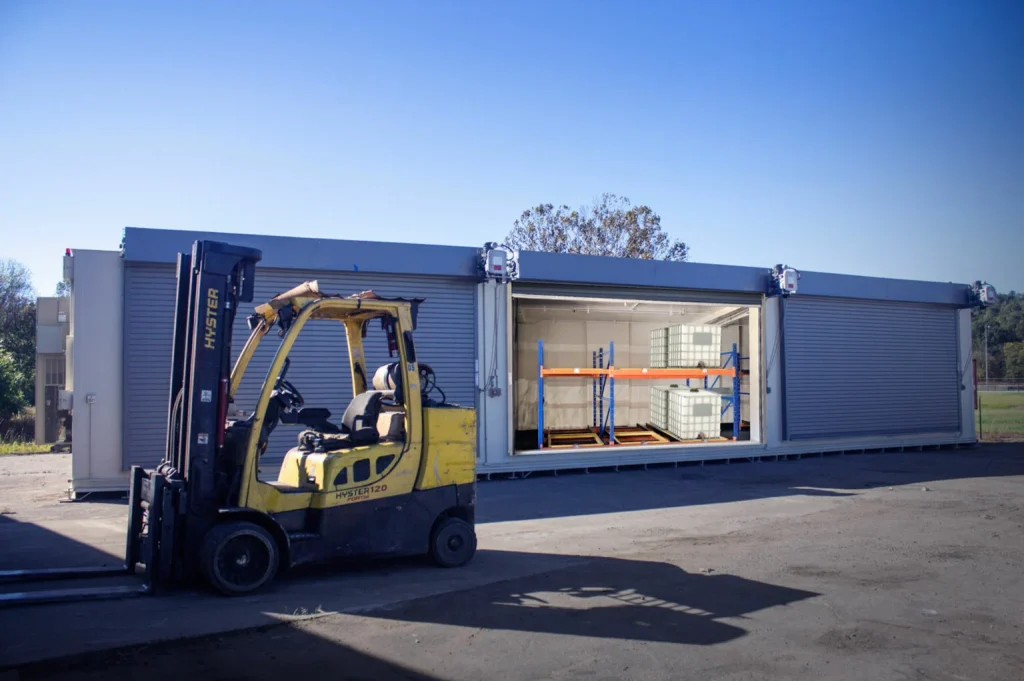
Hazmat Storage Service
A compliant chemical warehouse must meet strict design, safety, and operational requirements include
Hazmat Warehouse Design & Requirements
A compliant chemical warehouse must meet strict design and operational criteria. Key requirements include
- Facility Construction: Use fire-resistant materials and reinforced structures. Walls, floors, and doors should resist chemical spills and fires. For example, hazmat buildings often have welded steel seams, sealed concrete floors with curbs (bund walls) of at least 12 inches height to contain spills. High-risk rooms (for corrosives or poisons) need dedicated ventilation that exhausts fumes safely outside the building. Doors and vents must be fire-rated, and emergency eyewashes or showers should be installed in corrosive areas.
- Quantity Limits: Adhere to mandated storage quantities per room or container. As noted above, OSHA/NFPA caps flammable liquids to 60 gallons in a single container (or 120 gallons for higher flash-point liquids). Total amounts of combustible liquids of Class IB, IC or IIIA must also not exceed 1,585 gallons in a single fire area. Similar limits exist for other classes (e.g. NFPA 400 sets maximums for oxidizers and organic peroxides). Warehouses must document these limits and often split large inventories into multiple fire-rated rooms or storage units.
- Segregation of Chemicals: Incompatible substances must be physically separated. For instance, oxidizers cannot be stored near organics or flammables, and acids away from bases. This usually means using separate rooms or barricades between classes. A practical rule-of-thumb is a 20-foot separation or non-combustible barriers between different hazard classes. Within the same class, certain chemicals may also need isolation (e.g. nitric acid vs organic acids). Warehouse operators often follow SDS (Safety Data Sheet) guidance and national chemical compatibility charts when planning the layout.
- Placement and Handling: Always store containers on stable shelves or racks, preferably at or below eye level. This reduces the risk of accidents when retrieving containers. Heavy drums and totes remain on lower racks; smaller bottles on upper shelves. All containers must be clearly labeled and kept closed when not in use. Loading/unloading areas should have spill kits on hand, and forklifts used in flammable areas must be spark-free types. Warehouse staff receive training on using personal protective equipment (PPE) like goggles and gloves when handling hazardous materials.
- Spill and Fire Protection: Secondary containment (spill basins or dikes) under bulk storage areas is essential to capture leaks. Automated fire suppression systems – such as sprinklers rated for chemical fires – are typically installed throughout. Many chemical warehouses also have gas leak detectors, alarm systems, and pre-planned evacuation routes. Emergency procedures (spill cleanup, fire response) are formalized in facility manuals. Some facilities even design “safe rooms” or shelters if toxic releases are a risk.


